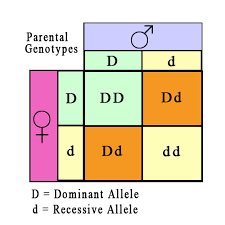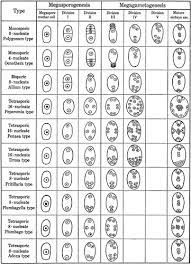Breeding or Achievement of Rice (Paddy)
Breeding or Achievement of Rice (Paddy)
Rice is one of the principal food crops being cultivated
throughout the world. It has been grown in humid tropics and subtropics for its
nutritive grains, Rice grain is rich in starch with a low content of protein
(7%). It is the staple food of nearly half of the world's human population. There
are two species of cultivated rice Oryza sativa and Oryza glaberrima. Of these
two, O.sativa is an Asian species whereas O.glaberrima is an African species.
The genus Oryza be longs to the family Poaceae (Graminiaceae). Most of the rice
varieties are diploid with chromosome number 24, but haploids (n=12),
tetraploids (4n=48) and triploids (3n-36) have also been bred in recent years.
In rice, crop improvement is aimed for improving grain qual
ity, yield, disease resistance and pest resistance and for early maturation.
The following methods have been employed in the breeding for improvement of
rice varieties:
1. Pure-line selection
2. Hybridization
3. Mutation
4. Genetic engineering
1. Pure-line Selection:
In pure-line selection, seeds of a better individual are
selected for several times till a superior variety is formed. Early workers
performed pure-line selection to improve rice varieties from a mixed population
of individuals. The improved rice variety ASDI was se lected from a single
individual of Kar Samba - Red crop.
Some other rice varieties improved via pure-line selection
are given below:
- CO4 (Anaikomban)
- CO10 (Kar)
- CO5 (Chinnasamba)
- CO17 (Vadasamba)
- CO6 (Sadaisamba)
- CO9 (Karsamba)
- CO19 (Sirumani)
2. Hybridization:
The crossing of two genetically different parent plants to
produce a new variety is called hybridization. Eminent plant breeders like
Parnell, Ramiah, Parthasarathy, Hector and Graham took much efforts for the
improvement of rice varieties through hybridization. GEB 24, CO 25, T 141 and
Latisail are rice varieties released in India before 1950s.
This was an International Rice Hybridization project to cross Oryza sativa var. Indica and Oryza sativa var. Japonica. This project was conducted by the Central Rice Research Indica variety had enough hardiness and wide adaptability to grow in wide areas of India, but had poor fertilizer effectiveness and productivity. On the other hand. Japonica variety had high fertilizer effectiveness. high productivity and resistance to lodging and grain shattering. By the way of crossing, the genes of Japonica rice were incorporated into Indica rice, but no one improved variety was released as the result of the research. The ICAR then sponsored to CRRI to continue the project to achieve the goal of the project. The F1 and F2 individuals of Indica X Japonica cross exhibited 10-100% sterility. The fertile seeds were collected and subjected to pure-line selection to get improved varieties. Thus many ADT series of improved varieties were released in India. Of these, the most important one is ADT 27. ADT 27 was obtained by crossing Norin 8 (a Japonica rice) with GEB24 (an Indica rice), which are the races of O.sativa. GEB 24 was tall and matured in 160-170 days, whereas Norin 8 was dwarf and matured in 100 days. The hybrid ADT 27 was semi-dwarf and matured in 105 days. It responded well to high manuring and gave 5.2 tonnes/ha. The grain size is medium and cooking quality is well and good.
IRRI Projects:
The International Rice Research Institute (IRRI) was established
at Los Banos in the campus of the University of Philip pines in 1962.
Researchers underwent studies to detect the rea sons for low rice yield in
tropical and sub-tropical countries. The tall varieties produced only 1.5-1.7
tonnes/ha. They found out the following as the major causes for low rice yield
in tropics:
- Tall and weak straw
- Poor utilization of solar energy
- Cloudy weather
- Poor cultural management
- Excess of water during early stages
- Lack of adequate water supply during grain development.
As early as 1950s. a spontaneous dwarf mutant rice called
Dee geo-woo-gen evolved in Taiwan. That mutant was characterized by-
- Dwarf plant habit (60 cms height)
- Stiff, erect leaves to absorb maximum light
- Insensitivity to light
- Lack of seed dormancy
- Good growth in all seasons.
Scientists at Taichung District Agricultural Improvement
Station (Taiwan), crossed Dee-geo-woo-gen with another Indica variety called
Thai Yuan-Chung to create the first improved dwarf variety Taichung Native I
(TNI). The TN I was susceptible to diseases and pests and hence it remained
unexploited for cultivation.
At the first attempt, the IRRI collected about 10,000
varieties of rice from different countries and established a World Germplasm
Bank of rice. Similar Germplasm banks were also established at CRRI (Cuttack)
and Plant Introduction Division (USDA). In the second attempt, the IRRI
performed massive hybridization works with different dwarf and tall varieties
of rice to produce improved hybrids. The IRRI has released IR series of rice
varieties.
Peta is a tall variety of rice growing in Philippines. It
was crossed with Dee-geo-woo-gen by H.M. Beachell working at the IRRI. As a
result of his research, the IRRI released the famous variety IR8 in November
1966. Later, IRRI has released IR 5, IR 20, IR 22, IR 24, IR 36, IR 50, IR 56,
etc. for cultivation. These improved varieties give 5-8 tonnes/ha.
All India Co-ordinated Rice Improvement Project (AICRIP):
The AICRIP was conducted at State Agricultural Colleges and
their substations in various districts in 1965.That project was financed by the
ICAR, New Delhi. It was started to produce disease and pest resistant dwarf
varieties of rice for farmer's benefits. Many improved rice varieties have been
released in India through the AICRIP. Examples -
Pvr I is derived from a cross between Mtu I being grown in
Andhra Pradesh and SR 26 being cultivated in Orissa. It is best to grow in
alkaline areas of Tamilnadu under pH 8.7. It gives 3-3.5 tonnes/ha and the
grains are finer than SR 26.
CO 31 is the product of hybridization between GEB 24 (
strain of Oryza sativa) and Oryza perennis. Being a drought resistant variety,
it gives medium fine grains with white colour and good cooking quality in 145
days.
CO 41 is derived from a cross between CU 2410 and IR22. It
is a medium tall variety with fine grains. Maturity duration is 100-105 days
and the yield is 5 tonnes/ha.
TKM 9 is a derivative of TKM7 X IR 8 cross. It is a semi
dwarf variety with bold grains. Maturity duration is 100-105 days and the yield
is 5 tonnes/ha.
- Ponni (TG 65 X ME 80)
- Kannagi (IR 8 X TKM6)
- Bhavani (Peta X Bpi 76)
- CO 37 (TN1 X CO 29)
- ADT 31 (IR8 X CUE 340)
- ADT 36 (Triveni X IR 20)
- IET 1444 (TN 1 X CO 29)
- PYI (Ponni X IR 8)
- PY 2 (Kannagi X Cul. 12032)
- C044 (ASD5 X IR 20)
- Ponmani (Pankaj X Jaganath)
- C043 (Dasal X IR 20)
- Paiyur 1 (IR 1721-14 X IR 1330-33-2)
- Jaya (TN1 XT 141)
- Cauvery (TN1 X TKM 6)
- Bala (TN1 X N 22)
- Vijaya (T 90 X IR 8)
- Ratna (TKM 6 X IR 8)
3. Mutation:
Mutations at gene level bring out some favourable variations
leading to evolution of improved varieties. Basmathi (India) and
Dee-geo-woo-gen (Taiwan) are examples of rice varieties arose through
spontaneous mutation. Artificial mutation is also induced to breed improved
varieties. In rice, mutation breeding is aimed for more tillering, resistance
to lodging, high yield, altered grain colour, high response to manures and
earliness in maturity. White Ponni is a mutant of Ponni. It is obtained by
irradiating the grains of Ponni by y-rays. It is taller than Ponni with lodging
habit. The grains are more slender than those in Ponni. The husk is straw
coloured in white Ponni instead of brown in Ponni.. P500-28 is yet other mutant
produced by y-ray irradiation of T-1145 variety. It is released by Bose
Research Institute, Kolkutta. It is a high yielding variety giving 7 tonnes/ha.
4. Genetic Engineering:
Genetic manipulation of plants in such a way as to have a
likely trait in the plants by introducing specific genes is known as genetic
engineering. Many important genes have been transferred to rice plant to create
new improved varieties. For instance, gene coding for viral coat protein of Rice
stripe virus and viral sat of Rice tungro virus are transferred to rice plants
to enable them to resist the virus attacks. Genes for ß-carotene synthesis are
transferred to rice to create golden rice producing vitamin A.
- NLR 9676 (Bulk 9 x Millikinnings)
- CO 41 (CU 2410 x IR 22)
- TKM 9 (TKM 7 x IR 8)
- IR 20 (IR 262 x TKM 6)
- Ponni (TG 65 x ME 80)
- Kannagi (IR 8 x TKM 6)
- Bhavani (Peta x BPI 76)
- CO 37 (TN 1 x CO 29)
- ADT 31 (IR 8 x CUI 340)
- ADT 36 (Triveni x IR 20)
- IET 1444 (TN 1 x CO 29)
- PY 1 (Ponni x IR 8)
- PY 2 (Kannagi x CUI 12032)
- IR 50 (IR 2153-14 x IR 28 x IR
- Ponmani (Pankaj x Jaganath)
- CO 44 (ASD5 x IR 20)
- MDU 2 (CO 25 X IR 8)
- TPS 1 (IR 8x Kattisamba)
- PKM 1 (CO 25 x ADT 31)
- ADT 27 (Norin 8 x GEB 24)




Comments